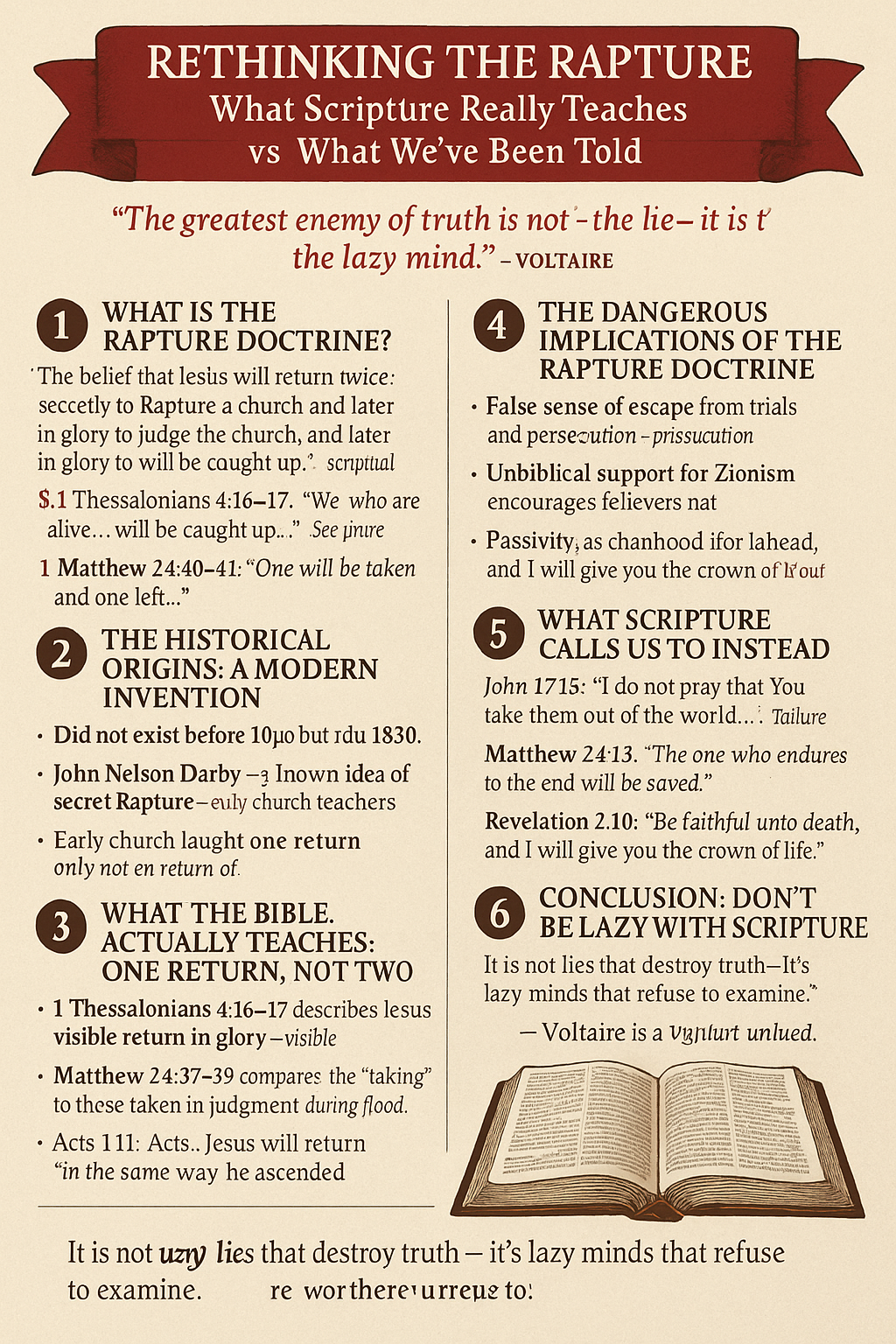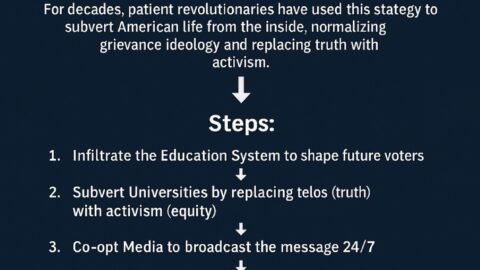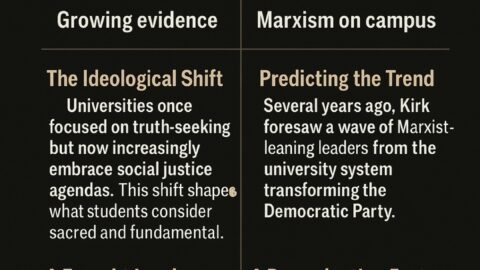Rethinking the Rapture: What Scripture Really Teaches vs. What We’ve Been Told
“The greatest enemy of truth is not the lie—it is the lazy mind.” – Voltaire
For many modern Christians, the concept of the “Rapture” has become central to their understanding of the end times. It is often preached with dramatic imagery: millions of believers suddenly vanish, planes fall from the sky, chaos erupts, and those “left behind” face tribulation. But is this doctrine biblical—or is it a product of modern theological invention?
1. What Is the Rapture Doctrine?
The popular rapture belief holds that Jesus will secretly return to snatch believers away from Earth before a seven-year period of tribulation, after which He will return again in judgment.
This idea is largely built on verses like:
- 1 Thessalonians 4:16–17: “For the Lord himself will descend from heaven with a cry… and the dead in Christ will rise first. Then we who are alive… will be caught up together with them in the clouds…”
- Matthew 24:40–41: “Two men will be in the field; one will be taken and the other left…”
Many interpret these as evidence of a two-stage return of Christ: first in secret for the church, and later in glory to judge the world.
2. The Historical Origins: A Modern Invention
The rapture doctrine, surprisingly, did not exist for the majority of Christian history. It first appeared in the early 1800s:
- John Nelson Darby, a British preacher, introduced the idea of a secret rapture as part of his broader dispensationalist theology.
- The Scofield Reference Bible (1909) helped popularize it in America, embedding it into the evangelical framework.
- The doctrine gained cultural traction through media like Hal Lindsey’s Late Great Planet Earth and the Left Behind series.
Before the 19th century, the early Church Fathers, Reformers, and Puritans taught only one return of Christ, not two. They expected Christians to endure persecution—not escape it.
3. What the Bible Actually Teaches: One Return, Not Two
When read in context, the Bible does not support a secret, pre-tribulation rapture. Instead:
- 1 Thessalonians 4:16–17 describes the Second Coming, not a secret escape. The language mirrors a king returning in triumph, with his people going out to meet him and escort him back—not disappearing.
- Matthew 24:37–39 compares the “taking” to those taken in judgment during the flood—not rewarded.
- Acts 1:11 affirms Jesus will return “in the same way” He ascended—visibly, gloriously, and once.
4. The Dangerous Implications of the Rapture Doctrine
- False sense of escape: Many believe they’ll be rescued before things get hard—ignoring Jesus’ clear warnings about enduring persecution.
- Unbiblical support for Zionism: Some support modern Israel uncritically, believing it plays a role in ushering in the end times—even when current policies violate biblical justice.
- Passivity: Rather than working for righteousness, some adopt a “why polish brass on a sinking ship?” mindset.
5. What Scripture Calls Us To Instead
The true biblical hope isn’t escapism—it’s resurrection, faithfulness through trial, and the coming new heavens and new earth.
- John 17:15: “I do not pray that You take them out of the world, but that You keep them from the evil one.”
- Matthew 24:13: “The one who endures to the end will be saved.”
- Revelation 2:10: “Be faithful unto death, and I will give you the crown of life.”
6. Conclusion: Don’t Be Lazy with Scripture
The rapture doctrine thrives because people rely on emotional storytelling, pop theology, and pastors who were taught Scofield, not Scripture. As Voltaire reminds us, it’s not lies that destroy truth—it’s lazy minds that refuse to examine.
Let us return to the whole counsel of God—not cherry-picked verses or man-made doctrines.
“Your word is a lamp to my feet and a light to my path.” – Psalm 119:105







